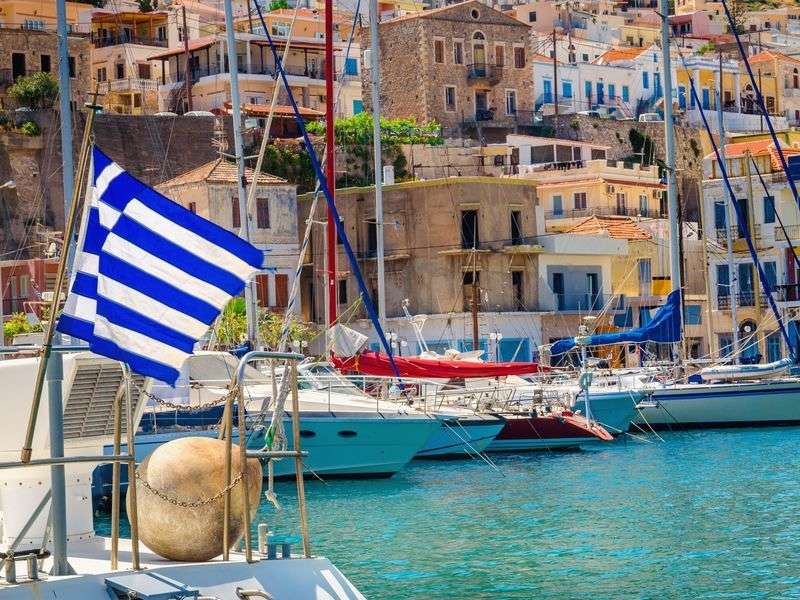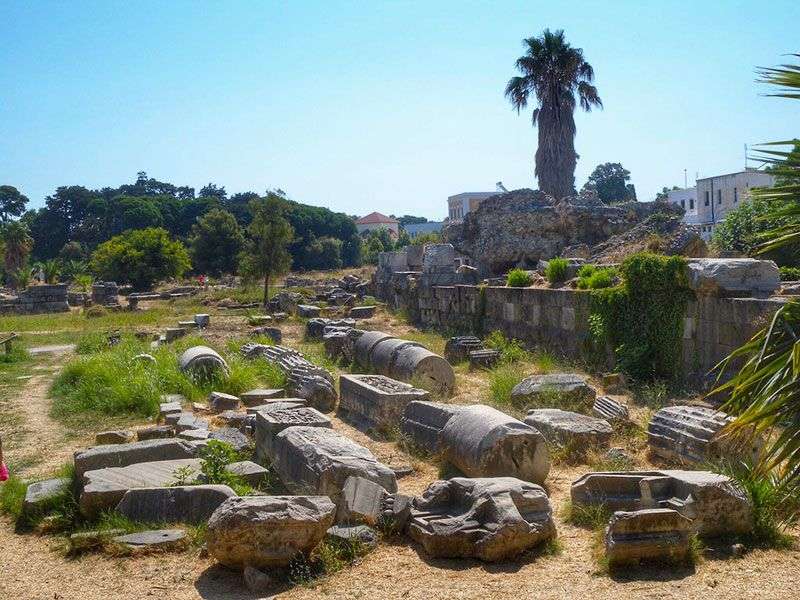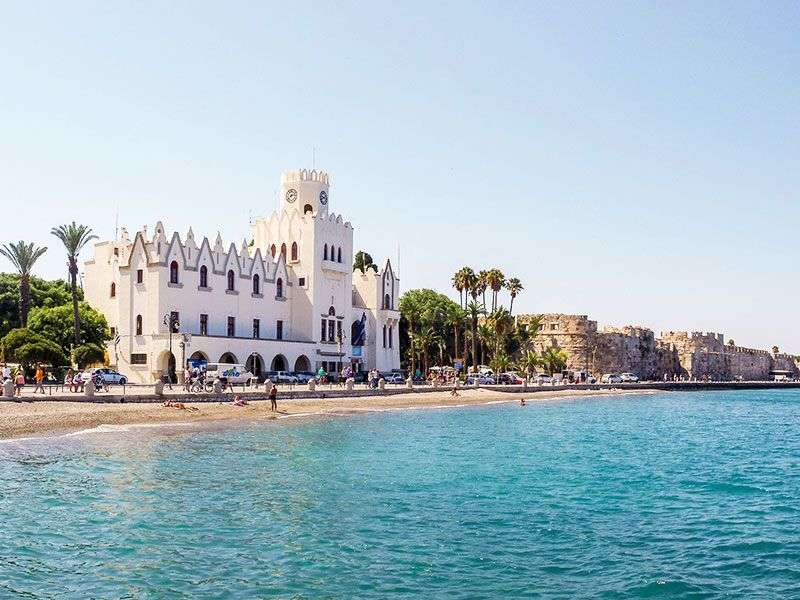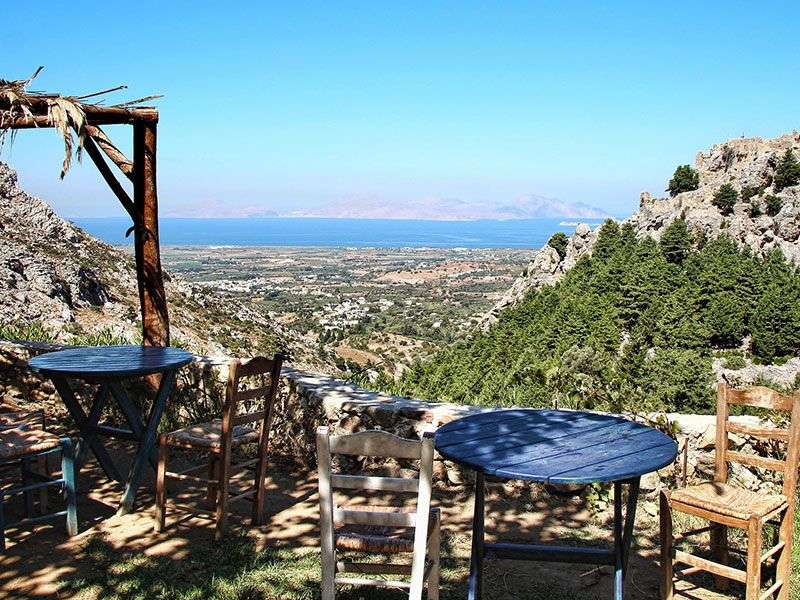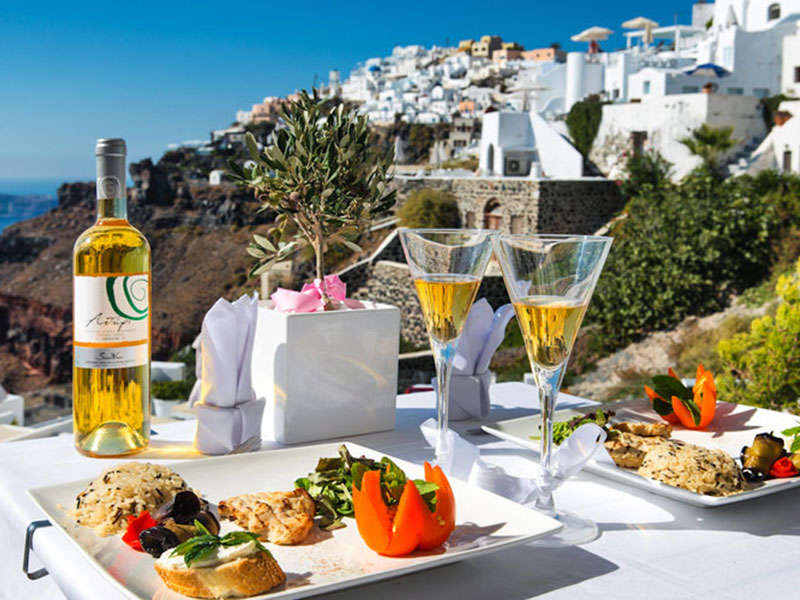Kos Island is situated in the south-eastern region of the Aegean Sea, close to the Asia Minor coastline. With its 10km width and 40km length, Kos is the third-largest island of the Dodecanese Islands. The largest settlement and capital of the island is Kos Town; a buzzing holiday destination, where there is always something happening. Bars, restaurants, clubs and heavenly, sandy beaches await visitors. You can also easily sail over to the adjacent islands, so an active holiday is certainly guaranteed. If you’re seeking to spend an adventurous holiday with some party involved, then Kos is a perfect choice for you! What to do in Kos? Join us and find out!
The article includes the followings:
- What to do in Kos: if you are fascinated by Greek history
- Things to do in Kos: active relaxation in nature
- What to do in Kos: explore the traditions!
- Things to do in Kos: if you are crazy for the Greek cuisine
What to do in Kos: if you are fascinated by Greek history
According to ancient Greek mythology, Kos Island was the homeland of Asclepius, the god of medicine. The first finds are assumed to be approximately 3, 500 years old. Another fascinating fact about the island is that Hippocrates, the father of medicine was also born here. Through history, the island has been invaded by the Persians and later came under the rule of Athens and was occupied by the Macedonians as well for a while. In the Middle Ages, the island was under the Ottoman rule for almost 500 years and yet later, the population had to endure British, Italian and German attacks. It was in 1948 that the island finally became part of Greece. Kos’ history is very diverse and fascinating. Keep on reading if you are interested in what to do if you’re fascinated by times gone by!
Asclepeion
You can admire the ruins of this 3, 000year-old church, dedicated to the god of medicine, in the vicinity of Kos Town. The church was built by the Dorians, using their renowned, characteristic Doric columns. Later the church hosted not only religious ceremonies but also music events and sports competitions. Most of its stones were taken away by the Knight Templars and used for the construction of the houses of the Old town. The ruins of the church are quite a sight and there’s also a breathtaking panorama there to revive in.
Agora & the Old Port
The ancient port of Kos is located some distance away from the sea. It’s a rather peculiar sight, a whole port, further away from the coast, but back in time, the sea level used to be higher. The port even had its own defensive walls and the ruins of many buildings and churches have been left to posterity. You can visit the mosaic-covered baths and the old marketplace. There was also an early Christian basilica, however, now you can only admire the ruins of the once majestic building. Have a stroll and try to imagine the daily life of the town, back 2, 000 years ago!
Casa Romana
The Roman villa dates back to the 3rd century. It’s been completely restored in the 20th century, thus painting a perfect picture of the era. Its 36 rooms are showcases of prosperity, and its marble-covered square and mosaic-tiled floors never fail to stun visitors. One of the walls of its halls is decorated with a 1, 800-year-old fresco, while its colonnades encircle a dreamy little Mediterranean garden. Explore the lifestyle of a Roman aristocrat!
Antimachia
Antimachina is a tiny village, a bit further away from the coast. It boasts two unique attractions that you must add on your to-do list.
The Venetian Castle
Kos was under the rule of the Venetian Kingdom for some time. It was then, in the 14thcentury, that this hilltop castle was built-in the middle of the island. It remained in a surprisingly good condition in the past 700 years. Explore the hidden nooks of the castle and admire the breathtaking panorama!
The Windmill of Antimachina
The village’s windmill was built-in the 19th century, but it’s been abandoned a long, long time. However, it has been recently restored, and the wheel is spinning merrily round and round as the works started again, of course, only for the sake of preserving tradition. The owners are very kind and have loads of stories to tell about the mill. Grind some wheat, then visit the ethnographic exhibition inside the mill. You can buy all sorts of confectionery products, including bread, prepared using the locally grained flour.
Things to do in Kos: active relaxation in nature
The Greek islands, without a shadow of a doubt, are the best for an active holiday. Blue waters framed with awe-inspiringly beautiful cliffs, and ancient olive trees waving at you. You’ll definitely be carried away by the Mediterranean zest of life and sense of adventure.
In this section, we’ll show you the best things to do in Kos if you are a true adventurer.
Climb an active volcano
Nyssiros is situated next to Kos, an island of volcanic origins. The dormant volcano towers over the landscape majestically in the middle of the island. But don’t worry, the last eruption occurred 16, 000 years ago and according to scientists, there’s no foreseeable risk of such activity for another 10, 000 years. However, the post-volcanic activities resulted in some rather remarkable natural phenomena: steam escaping through the cracks on the ground and natural hot springs all around. It’s about 70°C in the crater and it’s infiltrated by the strong scent of sulphur, therefore it’s advised to bring lots of water and wear boots with thick soles, as the ground itself is very hot.
Dive around the island!
Kos boasts fascinating sea life. There’re some unique and intriguing creatures in the waters surrounding the Greek Archipelago. Dive in and meet some sharks! Don’t worry, there are no teeth in the terrifyingly huge jaws of the species found around the islands. The huge jaws just help to filter the planktons out the water. Common dolphins are also easy to spot right near the coast, and they aren’t intimidated by people. The area is home to the endangered Mediterranean monk seal, in fact, you can find their largest population in this region. You can observe them hiding in coastal coves or sunbathing on rocks, whereas the loggerhead turtle frequents in the warm, shallow waters. The offshore reefs, in addition, host many species of corals, crabs and sea sponges and clams. Explore this mesmerizing underwater world!
Tame the waves!
There are numerous bays around the islands with perfect conditions for surfing. Kata Bay on the western coast of Kos is one of the most beloved spots amongst surfers. Hop on board and let adrenalin run through your body!
Dive into the crystalline blue waters!
Kos’ beaches are mostly sandy or pebbly, framed with cliffs. There are numerous cliff ledges that are long used as diving boards by tourists and locals alike. It’s a truly dizzying experience to throw yourself into the dazzling blue water from up high. Just be careful, only jump in designated areas!
Join a Jeep Safari tour!
This adventure-filled trip will let you drive up to the Mount Dikeos and watch the sunset.
Bumping through the rocky terrain with these impressive jeeps will make you feel like a real explorer. The top of the mountain offers a stunning view over Kos Town, and it’s an unforgettable experience to watch the blazing Greek sun falling behind the sparkling sea.
Sliding in the waterpark!
Aquatica Waterpark offers loads of fun for all ages. Long water slides that will almost make you feel like you are free-falling, whirlpools and hot tubs await visitors. You can try a wide range of water games, and a bar, a restaurant and a spa section are also there to ensure your comfort. This fantastic waterpark offers brilliant ways of relaxation for children and adults alike.
Climb the highest point of the island!
Mount Dikeos is the highest point of Kos Island, with an altitude of 846m above sea level. The mountain is formed by rocks of volcanic origins and as well as its surroundings, it’s a conservation area. The trail leading up to the highest peak is absolutely stunning. The slopes are covered in forests of pines, ash and eucalyptus trees, giving a home to rare bird and animal species.
What to do in Kos: explore the traditions!
The Greek culture had a huge impact on the world: architecture, astronomy, social sciences, poetry and medicine. The Greeks demonstrated great expertise in all the above subjects. The traditions of this simple nation have survived for thousands of years; their universe was formed by the arts and crafts of the everyday life including dance and music for instance, and religion also played a significant role. In the following section, we will show you how they keep the ancient traditions alive.
Basket weaving in Antimachia
The technique of basket weaving has evolved in every nation as these items were essential for the moving of goods. The baskets can be made by using different materials such as twigs, bark, different types of grass or leaves. In Antimachina, basket weaving has a long-standing tradition. You can buy the beautiful, locally-made baskets by the Museum of Folklore. The characteristic of these baskets is that the locals weave oleander twigs in them, therefore they are a lot more durable. Sometimes, you can also try this craft yourself on open workshops.
Greek dances
The Greek are far-famed for their traditionalism. However surprising it might be, there are more than 4, 000 known Greek dance styles. There are dance groups in every city and the fascinating choreographies are inevitable elements of festivals and celebrations. Of course, you’ll have the opportunity to get to know the Greek dances in Kos as well. Join in and try the Sirtaki or Hasapiko.
Pottery on the island
Kardamena is situated on the southern side of the islands. As well as its summer festival, the village takes pride in its pottery. The distinctive characteristics originate from the Asia Minor region and the traditions of Greek tribes. Plates embellished with multi-hued, flowery motifs and slender amphoras are the characteristic ceramics of the region. When visiting, surprise yourself with a pretty, hand-crafted souvenir!
Things to do in Kos: if you are crazy for the Greek cuisine
Forget the greek salad or gyros! Greek cuisine basically doesn’t even exist in such form. Greece being a union of separate nations and poleis, there are remarkable gastronomical differences in different regions. Sheep- and goat farming is really widespread across the country, as well as cheese-making. In the following paragraphs, we will list some of the most delicious dishes in and around Kos.
Seafood
Relying on the sea as an island is a quiet and evident and convenient thing to do. The local cuisine offers an immensely varied range of ways to prepare Poseidon’s gifts. The spongers set sail in the spring and often spend months at sea. Hence, they’ve found the secret of the perfect preservation: salt, wind and sun. The dried and salted parrotfish, for instance, is a real treat. Octopus is prepared by being sliced to thin slices first, dried on the blazing sun then it can be used for different cooked dishes.
A fantastic stew is cooked by using clams, marinated in seawater with thymes. Razor clams are bivalve molluscs with longish shells. They’re mostly grilled with garlic marinade. Flying fish is mostly cooked with rosemary and raisins and served with potatoes and green beans. You probably get the gist of it: the sea is an indispensable element of the island’s culinary experience.
Mutton roasted and toasted
With the longstanding tradition of sheep farming, mutton has been one of the core ingredients of Greek cuisine for thousands of years. Slow-cooked lamb with rosemary, spinach and barely, for instance, is a true Dodecanese speciality, widespread all through the Greek Archipelago. Another favourite is the roasted lamb, sprinkled with white wine and olive oil and larded with oregano and garlic, served with potatoes. The local lamb stew boasts some rather unique flavours: tomato sauce with garlic, oregano and celery. The traditional lamb’s head soup is accompanied by hot peppers. The above list proves that the meat of these woolly animals is prepared just as diversely as is seafood. Whilst in Kos, make sure you sample some of the above specialities!
A world of cheese
Sheep milk is perfect for the production of strong-flavoured cheese. Soft, creamy or hard, grainy, fresh, mature, salty or sweet, Greece has it all! Kalathaki is a brined cheese, similar to feta. Krassotyri is a speciality of Kos, another brined cheese. Produced by using a sweet type of nut, Graviera is a perfect accompany of wine. You will also come across smoky or braided cheese and long ripening period is not a challenge here as the salty sea air is perfect for drying the various wheel-shaped delicacies. Cheese platters are served with tomatoes, onions and olives.If you are a cheese fan, Greece is like a slice of Heaven for you!
Our article has summarised the diverse range of opportunities this island has to offer. Regardless of whether you are a sports fan or fascinated by the culture of times gone by, Kos is the place to be. If you liked our article, waste no more time, explore this magical place! Read more if you plan sailing in Kos or yacht charter in Kos.

